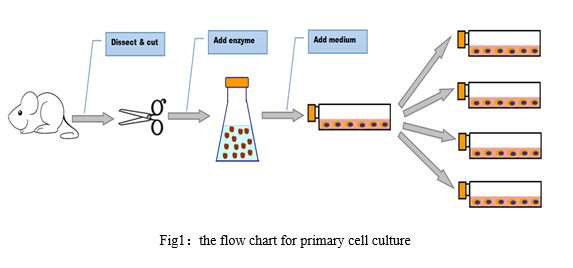Primary Cell Culture: Principle and Application
Primary cell culture is the process of single cellisolation from embryos, tissues and peripheral blood through special separationmethod, in-vitro cell culture in suitable culture medium, cell survival, growthand reproduction in the sterile system at appropriate temperature under certainconditions. The ‘apgebra’ for primary cell culture refers to the times for cellculture. It is the process from in-vivo tissue extraction, cell inoculationculture to the first cell subculture. It usually takes 1-4 weeks. Below is theflow chart for the common process of primary cell culture.

The cell is directly derived from living tissues.In-vitro culture is also as far as possible to simulate the body environment,that makes the living condition of isolated cells close to in vivo condition.It can provide a powerful tool for research of cell production, reproduction,metabolism, apoptosis. It can also be used for a variety of pharmacological effects,drug development research and clinical practice.
The quality of primary cell depends on manyfactors, such as the sampling, the culture conditions optimization, the asepticoperation, especially the tissue separation technology, etc.. For the most researchers,it may still be hard to get the high-quality cell line in primary culture.Although the primary culture technique is common, sometimes it is difficult toexplain the results.The Uscn Experimental Animal Inc., which is the subordinateenterprise of Cloud-Clone Corp., has established a government certified animalfacility and been able to isolate and culture hundreds of primary cell derivedfrom human, mouse, rat and some macrofaunas. Based on it, we can providecustomized cell experiment service, including cell culture, cell transfectionand cell proliferation, infection and apoptosis after stimulation with variousdrugs. If there is any difficulty in the cell culture experiment, you cancontact us. We’d be glad to lend a hand.
For more information, please visit www.cloud-clone.us.
